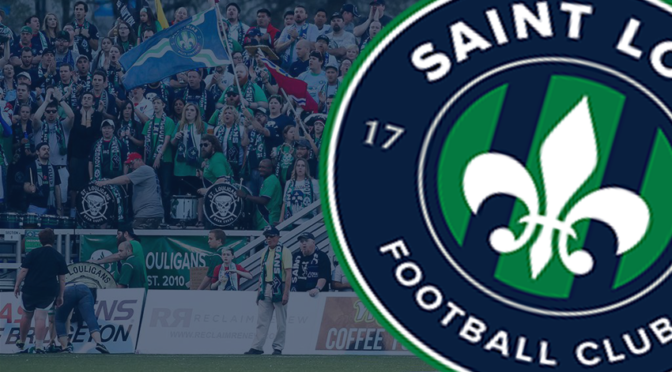Hey, let's split this can of soup!
 How many times in your journey to lose weight have you THOUGHT you were doing the right thing and eating healthier only to get on the scale and see that you gained 2 pounds! There is nothing more frustrating than either not losing any weight or worse gaining weight after a week of trying your best to do good!
How many times in your journey to lose weight have you THOUGHT you were doing the right thing and eating healthier only to get on the scale and see that you gained 2 pounds! There is nothing more frustrating than either not losing any weight or worse gaining weight after a week of trying your best to do good!
Take heart my friend and realize that it may not be entirely your fault! There are so many factors that go into losing weight and everyone’s body is different. What helps me lose weight might make you gain weight and vice versa. Below I’ve listed a few of the most common roadblocks that we run into when trying to eat healthier and lose weight. A few of these you may be suprised to find out about, others you may have already known.
1. Correctly Reading Nutrition Labels: This is probably the single most important factor when trying to eat healthy and usually the most common place where people get hung up. The information you get from a nutrition lable largely depends on what kind of meal plan you are on. For example on Weight Watchers there are 4 components you factor in – Fat, Carbs, Fiber & Protein. If you’re a calorie counter you will want to pay close attention to the total calorie count but also the number of calories that come from fat. Remember not all calories are created equal! If you’re on an Atkins type plan then Carbs is your focus on a label. Most Nutritional Labels will also tell you what percentage of the daily recommended values each of the categories are.
The real kicker here is the Serving Size and Servings per container! Imagine this….You go into the store and pick up a can of soup for lunch. You get home open your can of soup and put it into a pot to heat it up. While waiting on your soup to cook you take a look at the Nutrition Label….Calories: 90 (good)…Fat: 4g (good)….Carbs: 19g (not bad)…Protein: 18g (nice!)…Serving Size: 1/2 cup….Servings per container: 2!! WHAT THE?!? This can of soup is supposed to feed 2 people?!?! Most people NEVER think about this and I didn’t either until recently. So blindly you eat the can of soup thinking you are eating a healthy lunch under 100 calories yet lo and behold you’ve just ate enough for 2! Now that can of soup turns into 180 calories, 8g of fat, 38g of carbs and 36g of protein! On Weight Watchers your 3pt lunch is now a 6pt lunch! While this isn’t necessarily STAGGERING for a can of soup you wouldn’t believe how many food items that appear to be “single serving” are actually 2-3 servings per container! Another classic example is a bag of chips from Jimmy Johns. What appears to be just a 1 person bag of chips actually contains enough for 2.5 servings! Whoops! Now that 5pt bag of chips turns into 12pts!
It’s crucial that you carefully examine your Nutrition Labels when eating pre-packaged food or preparing meals. What you don’t know in this case COULD be hurting your weight loss efforts in the long run.
2. Eat less, lose more: Nothing could be further from the truth. While it is true that you do need to cut your caloric intake and increase your overall activity to help you burn the fat it is important to not let yourself get caught up in the “crash diet” phase. People get into the mindset that if they only eat 1000 calories a day that they will lose weight. Initially you may, but soon after your body will go into “starvation mode” and shut down. In this mode your body thinks it is starving and holds onto anything it consumes to help it survive. The end result is a gain in weight even though you eat less.
When getting yourself on any type of workout/meal plan it is VITAL to ensure you are taking in enough calories per day to cover what your body is burning with your normal activity. Standardly women need around 1200-1500 calories per day and men need around 1800-2000 calories per day to sustain daily activity. When you increase your activity with exercise you will create what is called a caloric deficit meaning you are burning more than your body is consuming. It takes a 3500 calorie deficit for your body to burn 1lb of fat. When people look at this they immediately think, “I’ll just drop my intake and increase what I burn at the gym.” No, No, No and No. You need food to sustain your body! Your deficit should come from anything above and beyond what your body needs for daily function. To help better explain this, check out this article.
Bottom line…you actually do need to eat in order to lose weight!
3. Low fat, low calorie and “diet” food: One of the first things we do when we start to “diet” is reach for everything “Reduced Fat” or “Fat Free”. Just because it says “DIET” on the label doesn’t automatically mean it’s good for you! This goes back to READING THE LABEL! Often times when a product is “reduced fat” or “low cal” they load it up with other ingredients to compensate for the taste. More often than not these so-called “diet foods” are laden with sugars and carbs and almost always sodium!
Be sure that you are drinking PLENTY of water. Increasing your daily water intake helps flush out toxins and keeps your body hydrated. When you consume a lot of sodium (something easy to do when you eat a lot of pre-packaged meals) your body can quickly become dehydrated and begin to hold on to water which can cause bloating, water retention and weight gain. 8 glasses of water per day is the recommended amount. (Carbonated waters don’t count!) 🙂
Something to keep in mind…sugar that your body doesn’t process can turn into fat! So while you might be eating something low in actual fat, the sugar content of that same food could have the same damaging effects if not worse. Beware of foods artificially sweetened as well. Artificial sweeteners (such as aspartame) have been known to trigger your body into craving high-carb foods. Additionally, things such as diet soda, while they are calorie free, drinking one when you feel hungry will not suppress your appetite for that very reason. They have no nutritional value to satisfy your hunger and therefore you will continue to be hungry. (www.livestrong.com)
The lesson here is that you are better off sticking with fresh fruits and vegetables, lean proteins and whole grains for your meals. If you need a snack reach for a hand full of nuts, or a sugar-free pudding cup if you are craving something sweet! Remember, “diet” doesn’t always mean weight loss friendly!
4: I have to kill myself at the gym to lose weight: This is another weightloss myth! Working out doesn’t have to be painful and dreadful. You can do all sorts of activities to burn calories and not kill yourself at the same time. Walking as little as 30 minutes a day can promote weight loss. You can also try swimming, biking, rollerblading, tennis, basketball etc. Losing weight doesn’t have to mean being stuck in a gym trying to run for 3 hours on the treadmill and lifting 100lb weights. Your weightloss goals will largely drive what type of exercise routine you should be following and at what intensity level you workout. There is not a magic program that works for everyone, you have to find what is right for you and what will help you meet your goals.
Check out: www.workoutbox.com. I have been using this program for 11 weeks and have found great success! The site will ask you a few basic questions to figure out which of their programs will work best for you. They offer programs to help you lose weight, or if you are already in shape to help you get toned and build muscle! It’s SUPER cheap too! Highly recommended!
5. (Finally) The scale seems to be stuck: Have you ever got on the scale and you only lost a pound or two, or maybe you didn’t lose anything one week? Don’t panic! When you first start your weightloss journey, the first week usually brings the biggest numbers on the scale. Most people will lose anywhere from 5-8 pounds in the first week. Don’t expect this every week. Initially your body is shedding water weight and excess that it has held onto and is now trying to shed as you start ramping up your metabolism. A healthy weight loss after that is about 1-2lbs per week. Anything more than that is not healthy and not sustainable. The quicker you lose a large amount of weight the quicker you may put it back on. The exception here is that if you are extremely overweight (75-100+ pounds) you will generally tend to lose double digit pounds the first few weeks as you “shock” your system with getting healthy. So don’t be alarmed if you aren’t dropping 20lbs in 2 weeks…slow weightloss is manageable weightloss!
I hope you find these tips helpful in conjunction with the last blog and that you are able to get your journey started on the way to a new and healthier you! We’re just getting started and there is SO much more to come! Stay tuned for more ways to get fit in 2012! But don’t wait until then to get started, the time to start is now! A new you is just around the corner!!
(Always consult your doctor or physician before beginning any workout or diet plan.)
Brought to you by Mills Properties







